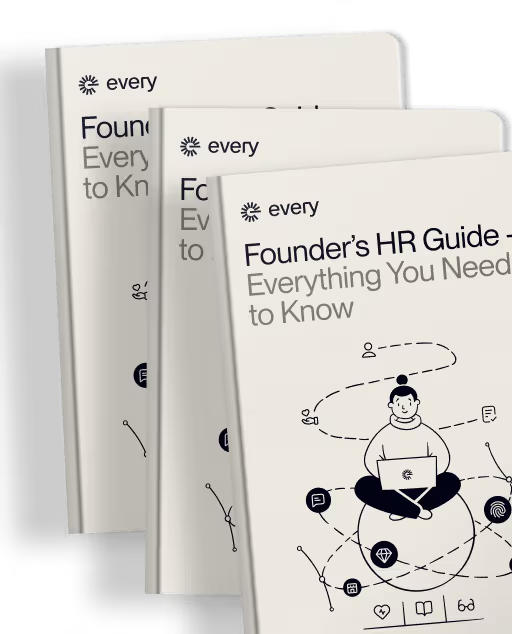Navigating Form 1120 for C-Corps With Ease

Form 1120 - the beloved tax form that every C-Corp owner looks forward to filling out yearly, right? Well, not exactly. But you're not alone if you find it daunting and complex.
This form, mandatory for all U.S. corporations, is a critical part of your business's tax filings, and understanding it is essential. It's not just about crunching numbers and filling in blanks. It's about ensuring your business's financial health and compliance with tax laws.
So, let's decipher this cryptic document together, shall we? There's more to explore - and possibly, more to gain.
What is Form 1120?
Form 1120, often called the corporate tax return, is a critical document that C Corporations must accurately complete and submit on time to the IRS. Understanding its requirements is crucial. This form provides detailed financial information about a corporation's income, gains, losses, deductions, and credits and calculates the corporation's federal income tax liability.
Filing deadlines are paramount: for most corporations, the due date for Form 1120 is the 15th day of the third month following the end of the corporation's tax year. Pay close attention to these dates to avoid penalties.
The tax implications of Form 1120 are significant. A poorly completed form can lead to incorrect tax calculations, penalties, and audits. It's not just about filling in the blanks; it's about understanding your corporation's financial status and tax obligations.
Have a compliance checklist to ensure you're not missing any essential steps. This includes accurate record-keeping, understanding your tax obligations, and preparing all the necessary documentation.
Your documentation should include a copy of your corporation's income statement and balance sheet, among other records. It's not just about ticking boxes; it's about ensuring your corporation's financial health and legal compliance.
Decoding the Parts of Form 1120
Now that you're familiar with Form 1120's importance, let's break it down into its key components to simplify your tax filing process. The form is divided into four major parts: income, Deductions, Tax and Payments, and Schedule K.
First, under the Income section, you'll encounter Revenue Recognition. This is where you report your total income, including gross receipts or sales and cost of goods sold. You have to accurately recognize and report all revenue to avoid misrepresentation.
Next, you'll navigate through Deductions. This part involves Expense Allocation, where you list down your business expenses. It includes everything from salaries and wages to depreciation. Speaking of which, you've got to understand Depreciation Methods. The IRS allows different methods to ensure you choose the most advantageous for your corporation.
The Tax and Payments section is where you calculate your tax liability. To minimize your tax bill, make sure to claim any available Tax Credits.
Common Mistakes and How to Avoid Them
As you navigate the process of filing Form 1120, you must be aware of common pitfalls and learn how to avoid them. This will save your C Corp from unnecessary stress and possible financial consequences. Here are three common errors and some avoidance strategies:
- Income Misreporting: Accuracy in reporting all forms of income, including dividends and interest, is a must. Mistakes can lead to audits or penalties. Double-check your figures before submitting to ensure accuracy.
- Overlooking Deductions: Don't leave money on the table. Be thorough in identifying all possible deductions, from business expenses to depreciation. It's advisable to consult with a tax professional to maximize your deductions.
- Filing Deadlines: Missing filing deadlines can result in hefty fines. Mark your calendar and aim for a timely submission. If you foresee a delay, consider filing an extension to avoid penalties.
Being meticulous with your C Corp Form 1120 can save you from these common mistakes. Remember, income misreporting, overlooking deductions, and missing filing deadlines are pitfalls you can easily avoid with some diligence and planning. Following these accuracy tips can make the filing process smoother and more efficient.
When to Seek Professional Help
While avoiding common mistakes is essential, it's equally important to recognize when the complexity of tax laws warrants seeking professional help. The tax implications of your C-Corp's actions can have significant financial implications. This is where a tax professional can step in, assisting with compliance requirements and risk management.
Unforeseen circumstances can quickly complicate your tax situation. The introduction of new products, expansion into new markets, or changing your corporate structure can all have tax consequences. A tax professional can help you navigate these challenges, reducing the risk of costly mistakes and penalties.
Furthermore, a tax professional can assist in identifying growth opportunities. They can provide insights into tax credits, deductions, and strategies to help your C-Corp grow while minimizing its tax liabilities. Remember, it's not just about managing risk - it's about leveraging opportunities too.
Leveraging Form 1120 for Strategic Planning
In strategic planning, leveraging Form 1120 isn't just about compliance; it's a goldmine of financial data that can guide your C-Corp towards more informed business decisions. This detailed tax return form provides a comprehensive picture of your corporation's financial health, offering valuable insight for data interpretation and enabling you to craft effective tax strategies.
When you master the use of Form 1120, you can:
- Boost financial analysis: The information from line items on Form 1120 can be used to identify trends, measure performance, and formulate projections. It's a powerful tool for financial analysis that can drive strategic decisions.
- Foster business growth: The data from Form 1120 can help identify areas of improvement. You can pinpoint where to cut costs, invest more, or shift resources, thereby promoting business growth.
- Optimize tax strategies: Understanding the intricacies of Form 1120 can help you better plan for tax liabilities, potentially reducing your overall tax burden.
Leveraging Form 1120 is about more than just ticking off a box on your compliance checklist. It's about harnessing the power of financial data to steer your corporation towards sustainable growth.
Conclusion
So, you've decoded Form 1120's complexities, learned to sidestep common errors, understood when to call in the pros, and discovered its strategic advantages. Remember, it's not just about filling in the blanks—it's about understanding what you're filling in. With Form 1120, you're not just filing taxes, you're strategizing for your C-Corp's future. Done right, it's a tool for growth and a roadmap to success.
Up to 3,500 bonus and 3% cash-back on all card spend [3], 6 months off payroll, and 50% off bookkeeping for 6 months, free R&D credit.
Frequently Asked Questions
- How do I sign up for Every?
You can get started right away—just click “Get Started” and follow a short onboarding flow. Prefer a little help? One of our specialists can walk you through incorporation, banking, payroll, accounting, or whatever you need.
- What features does Every offer?
Every gives startups a complete back office in one platform. From incorporation and banking to payroll, bookkeeping, and tax filings, we take care of the operational heavy lifting—so you can spend more time building, less time managing.
- How is Every different from other tools?
Most competitors give you software. Every gives you a full-stack finance and HR team—plus smart financial tools that actually benefit founders. Earn up to 4.3% interest on idle cash and get cash back on every purchase made with your Every debit cards, routed straight back to you.
Every is not a bank. Banking services provided by Thread Bank, Member FDIC. Your deposits qualify for up to $3,000,000 in FDIC insurance coverage when Thread Bank places them at program banks in its deposit sweep program. Pass-through insurance coverage is subject to conditions. The Every Visa Business Debit Card is issued by Thread Bank, Member FDIC, pursuant to a license from Visa U.S.A. Inc. and may be used anywhere Visa cards are accepted.
- Is my data secure with Every?
We use end-to-end encryption, SOC 2-compliant infrastructure, and rigorous access controls to ensure your data is safe. Security isn’t a feature—it’s foundational.
Can I switch to Every if my company is already set up?Yes—you can switch to Every at any time, even if your company is already incorporated and running. Whether you're using separate tools for banking, payroll, bookkeeping, or taxes, we’ll help you bring everything into one place. Our onboarding specialists will guide you through the process, make sure your data is transferred cleanly, and get you set up quickly—without disrupting your operations. Most founders are fully transitioned within a week.
- What stage of startup is Every best for?
Every is designed for startups from day zero through Series A and beyond. Whether you're just incorporating or already running payroll and managing expenses, we meet you where you are. Early-stage founders use Every to get up and running fast—with banking, payroll, bookkeeping, and taxes all handled from day one. Growing teams love how Every scales with them, replacing patchwork tools and manual work with a clean, unified system.
We’re especially valuable for teams who want to move fast without hiring a full finance or HR team—giving founders more time to build, and fewer distractions from admin and compliance
- How long does onboarding take?
Onboarding with Every is fast and efficient. For most startups, the process typically takes between 3 to 7 days, depending on your specific needs and how much setup you already have in place.
If you're a new company, you'll be up and running quickly—getting your banking, payroll, and bookkeeping set up without hassle. If you’re transitioning from another system, our specialists will help you migrate your data, ensuring a smooth switch with no gaps or errors in your operations.
We guide you every step of the way, from incorporation to setting up automated payroll to handling your taxes—so you can focus on growing your business. Our goal is to make sure you're fully operational and confident in your back office in under a week.
Practical Questions to Ask to Ensure Your Bank is Well Managed
How much liquidity does the bank have on hand to cover unexpected withdrawals or shortfalls?
What percentage of the bank's deposits are invested in longer-term securities and loans, and what percentage is kept as cash reserves?
How does the bank diversify its investment portfolio to minimize potential losses and reduce risks?













